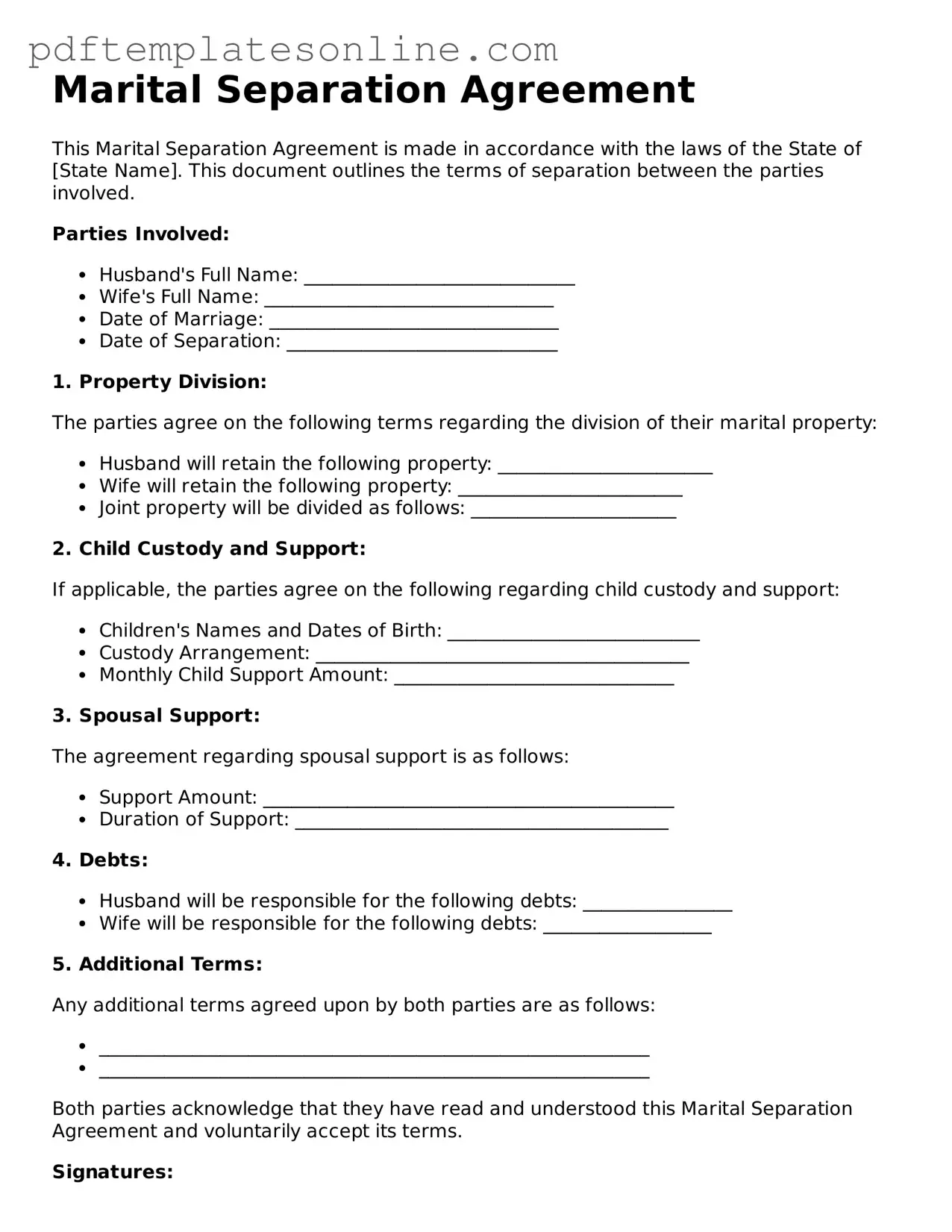Filling out a Marital Separation Agreement can be a daunting task, and it is not uncommon for individuals to make mistakes during the process. One of the most frequent errors is failing to provide complete information. Each section of the form requires specific details about assets, liabilities, and personal information. Incomplete forms can lead to misunderstandings and complications down the line.
Another common mistake is not being clear about the terms of child custody and support. Many individuals assume that verbal agreements will suffice, but it is crucial to document these arrangements clearly in the agreement. This ensures that both parties have a mutual understanding and can prevent future disputes.
People often overlook the importance of addressing all assets and debts. It is essential to list both marital and separate property accurately. Failing to disclose certain assets can lead to legal repercussions and may affect the fairness of the agreement.
Additionally, some individuals neglect to consider tax implications. For instance, the division of assets can have significant tax consequences. It is advisable to consult with a financial expert to understand these implications before finalizing the agreement.
Another mistake is not including a dispute resolution clause. Life can be unpredictable, and having a plan for resolving potential disagreements can save both parties time and stress in the future. This clause can specify mediation or arbitration as a means of resolving disputes, providing a clear pathway for addressing issues.
People sometimes fail to update their separation agreement if circumstances change. Life events such as job loss, relocation, or changes in income can affect the terms of the agreement. Regularly reviewing and updating the document ensures it remains relevant and fair.
Furthermore, individuals may not fully understand their rights and responsibilities. It is essential to educate oneself about the legal implications of the agreement. Seeking legal counsel can provide clarity and ensure that one’s rights are protected throughout the process.
Another common oversight is not signing the agreement in front of a notary. A notary’s signature lends credibility to the document and can prevent future challenges regarding its validity. This step is often overlooked but is crucial for ensuring the agreement is legally binding.
Finally, some individuals rush through the process, thinking that a quick completion is sufficient. Taking the time to carefully review each section and consider the implications of the agreement can lead to a more equitable outcome for both parties. Patience and thoroughness are key to creating a fair and comprehensive Marital Separation Agreement.
